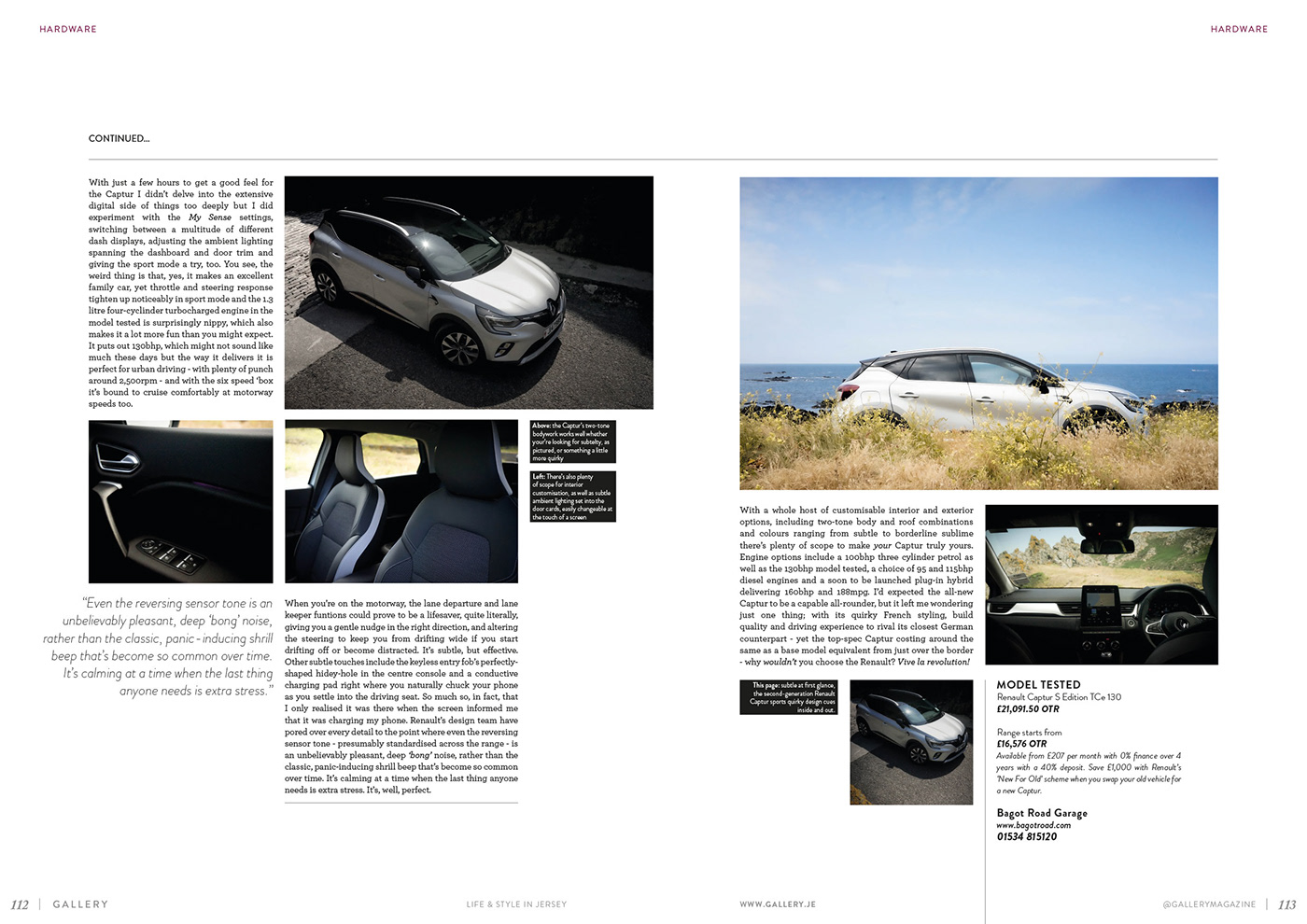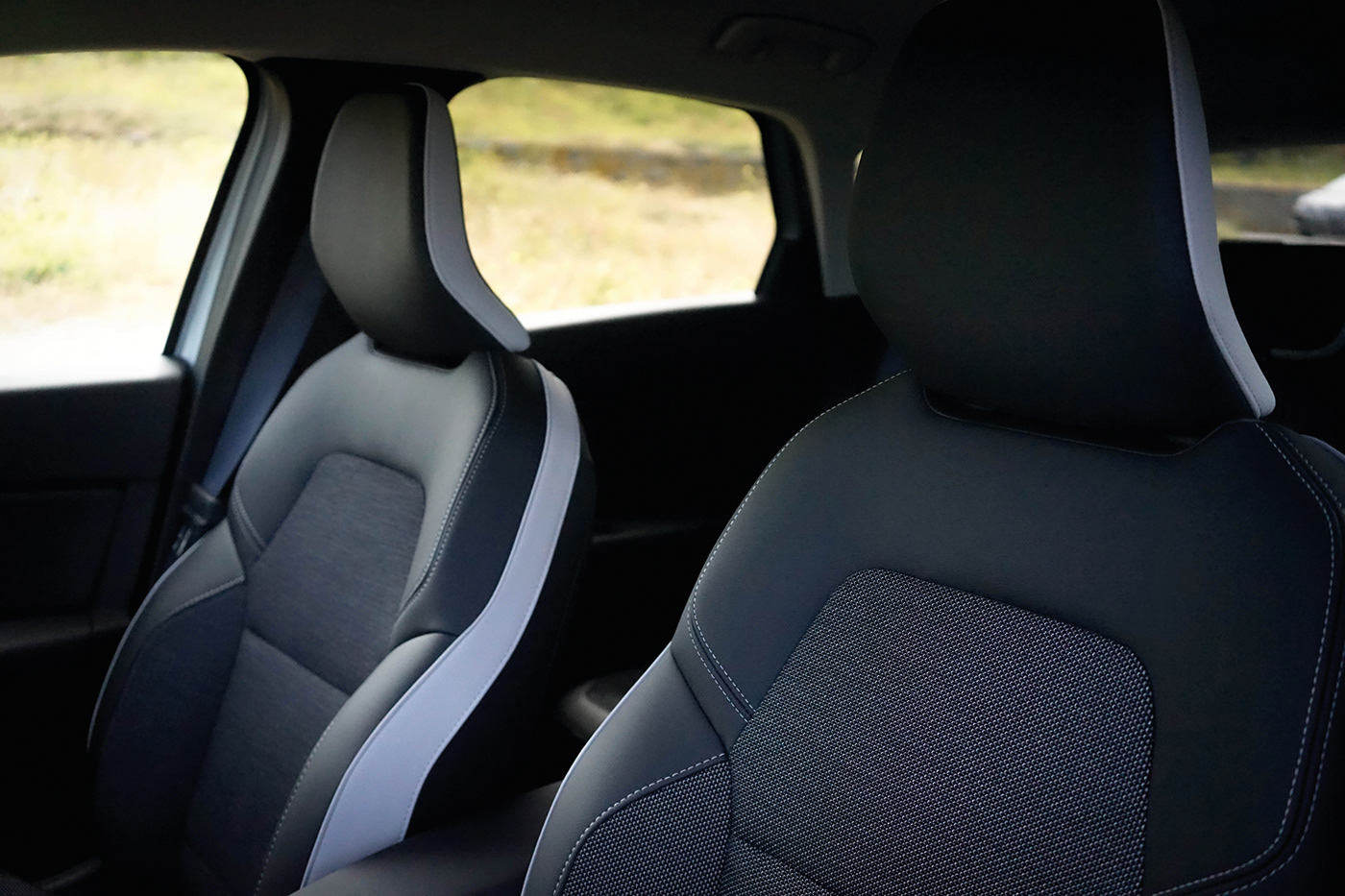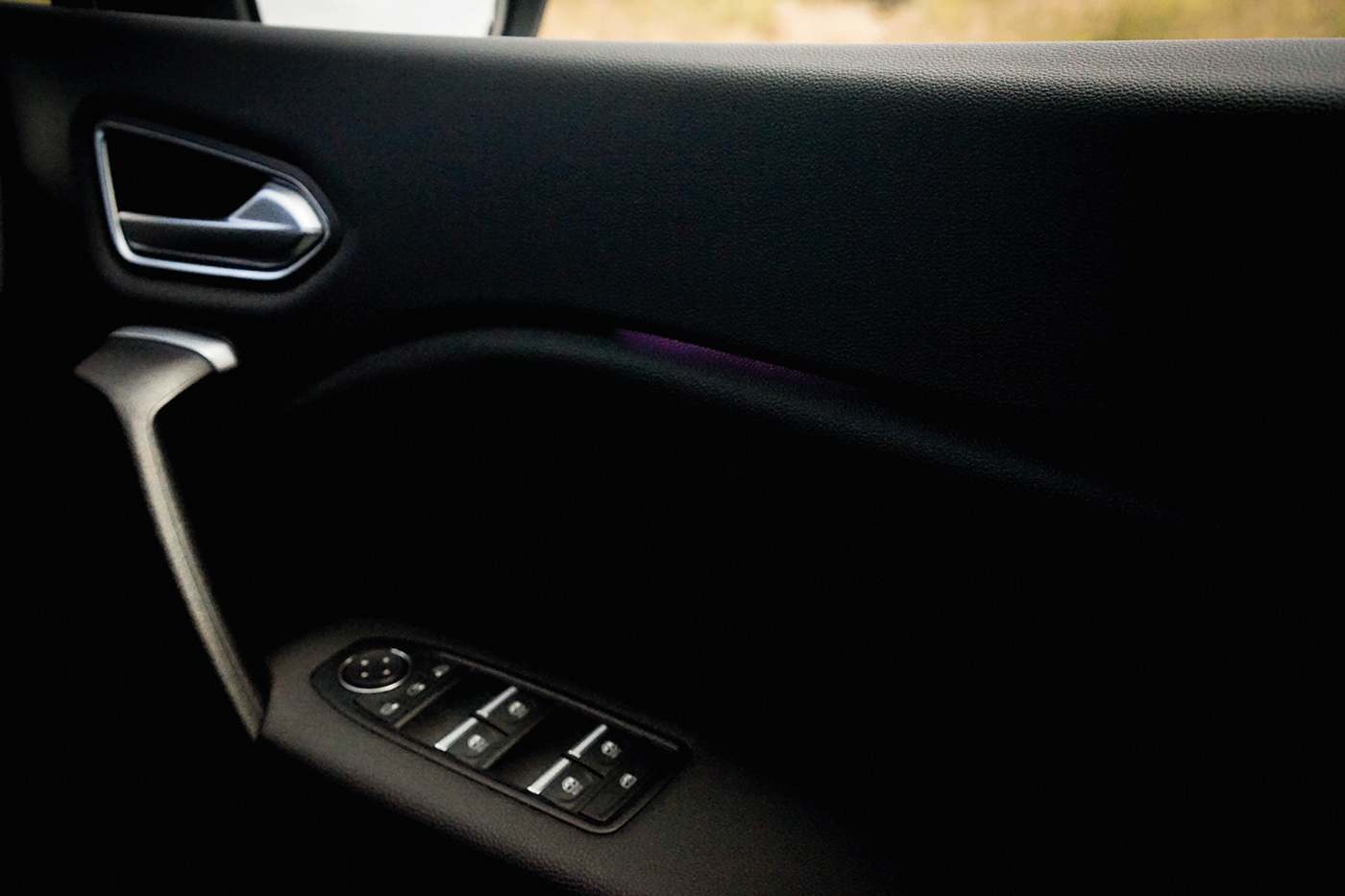Evolution on the outside, revolution on the inside.
A review of the second-generation Renault Captur, printed in the Summer 2020 edition of Gallery magazine (www.gallery.je)
All words, photographs, editing and editorial design by Russ Atkinson.


EVOLUTION ON THE OUTSIDE, REVOLUTION ON THE INSIDE
I tend to find that driving a car for the first time generally evokes one of two feelings; satisfaction that things were as expected, or disappointment. It’s rare that something blows you away. You see, we all have pre-conceived ideas about how a car might drive, how it’ll perform, what it might look like, how it might make you feel - and while I already knew that the days of questionable Gallic build quality were long in the past, something unexpected happened from the moment I sat in the new, second generation Captur.
What I didn’t expect, was it not to be as I’d expected. A mixture of complementary hard and soft surfaces, a brushed metal effect band across the dash that looks tasteful and integrates perfectly, that gorgeous monolithic screen that juts effotlessly from the centre of the dash; right at your fingertips yet remaining completely unobtrusive when you’re driving along. Tactile touches lurk everywhere; from the textured ends of the keys below the monolith of a navigation screen to the knurling on the heater controls, stalks on the steering column and the gearknob trim. Then there’s the gearknob itself; tall, upright, chunky and with a subtle hourglass shape. Almost everything you touch has been carefully considered, and it’s a car that you feel like you’re sitting in, not on. Goldilocks would approve.
The seats are more supportive than I was expecting from a compact SUV, with bolsters to hug your legs, high backs and interesting-looking headrests that’ll accommodate drivers and passengers much taller than myself with space overhead to match. The entire rear bench slides forward if you’re looking to trade rear legroom for boot space, and there’s more boot space still if you drop the false floor - perfect for stashing those miscellaneous items that usually find themselves rolling around in the boot like extra shopping or things you’re trying to hide from your partner or kids. On the subject of kids, if you have tiny people in your life and need to keep them entertained you’ll not have to worry about the peace and quiet being broken on longer trips thanks to two USB ports and a 12v outlet both up front and in the rear. iPads fully charged, headphones plugged in; travel bliss.
With just a few hours to get a good feel for the Captur I didn’t delve into the extensive digital side of things too deeply but I did experiment with the My Sense settings, switching between a multitude of different dash displays, adjusting the ambient lighting spanning the dashboard and door trim and giving the sport mode a try, too. You see, the weird thing is that, yes, it makes an excellent family car, yet throttle and steering response tighten up noticeably in sport mode and the 1.3 litre four-cyclinder turbocharged engine in the model tested is surprisingly nippy, which also makes it a lot more fun than you might expect. It puts out 130bhp, which might not sound like much these days but the way it delivers it is perfect for urban driving - with plenty of punch around 2,500rpm - and with the six speed ‘box it’s bound to cruise comfortably at motorway speeds too.
When you’re on the motorway, the lane departure and lane keeper funtions could prove to be a lifesaver, quite literally, giving you a gentle nudge in the right direction, and altering the steering to keep you from drifting wide if you start drifting off or become distracted. It’s subtle, but effective. Other subtle touches include the keyless entry fob’s perfectly-shaped hidey-hole in the centre console and a conductive charging pad right where you naturally chuck your phone as you settle into the driving seat. So much so, in fact, that I only realised it was there when the screen informed me that it was charging my phone. Renault’s design team have pored over every detail to the point where even the reversing sensor tone - presumably standardised across the range - is an unbelievably pleasant, deep ‘bong’ noise, rather than the classic, panic-inducing shrill beep that’s become so common over time. It’s calming at a time when the last thing anyone needs is extra stress. It’s, well, perfect.
With a whole host of customisable interior and exterior options, including two-tone body and roof combinations and colours ranging from subtle to borderline sublime there’s plenty of scope to make your Captur truly yours. Engine options include a 100bhp three cylinder petrol as well as the 130bhp model tested, a choice of 95 and 115bhp diesel engines and a soon to be launched plug-in hybrid delivering 160bhp and 188mpg. I’d expected the all-new Captur to be a capable all-rounder, but it left me wondering just one thing; with its quirky French styling, build quality and driving experience to rival its closest German counterpart - yet the top-spec Captur costing around the same as a base model equivalent from just over the border - why wouldn’t you choose the Renault? Vive la revolution!















